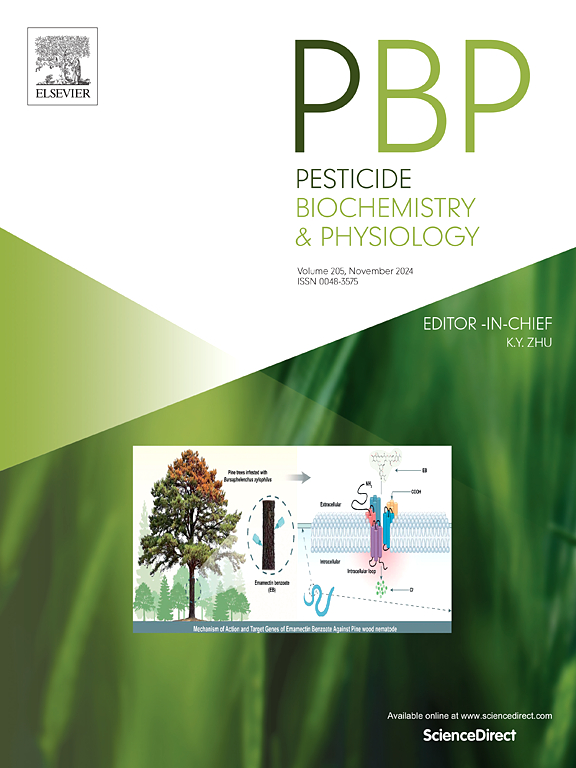Vitamin E alleviates zebrafish intestinal damage and microbial disturbances caused by pyraclostrobin
IF 4.2
1区 农林科学
Q2 BIOCHEMISTRY & MOLECULAR BIOLOGY
引用次数: 0
Abstract
Pyraclostrobin (PY) is highly toxic to aquatic organisms, and its increased residues in aquatic environments may have harmful effects on the intestine of aquatic creatures. Previous research demonstrated that vitamin E (VE) alleviated the acute toxicity of PY to zebrafish. This study further explored the mitigation effect of VE on PY-induced intestinal toxicity in fish and the underlying mechanisms by exposing adult zebrafish to PY (10, 20 μg/L) with or without 4 μM VE supplementation for 21 days. The results showed that VE alleviated the gut histopathological lesions caused by PY. VE co-exposure also improved PY-induced intestinal inflammation and restored the expression level of genes encoding intestinal tight junction protein. Furthermore, VE restored the anti-oxidation level inhibited by PY and reduced pro-apoptotic cytokine level and apoptotic enzyme activity increased by PY. 16S rRNA high-throughput sequencing showed that VE improved the zebrafish intestinal flora imbalance caused by 20 μg/L PY, increased the relative abundance of beneficial bacterium Cetobacterium, and reduced the relative abundance of pathogenic bacteria. In conclusion, VE alleviated PY-induced intestinal toxicity via repairing the damaged intestinal mucosal barrier, inhibiting inflammation, reducing oxidative stress and apoptosis, and improving the intestinal microbial disorder in zebrafish.

求助全文
约1分钟内获得全文
求助全文
来源期刊
CiteScore
7.00
自引率
8.50%
发文量
238
审稿时长
4.2 months
期刊介绍:
Pesticide Biochemistry and Physiology publishes original scientific articles pertaining to the mode of action of plant protection agents such as insecticides, fungicides, herbicides, and similar compounds, including nonlethal pest control agents, biosynthesis of pheromones, hormones, and plant resistance agents. Manuscripts may include a biochemical, physiological, or molecular study for an understanding of comparative toxicology or selective toxicity of both target and nontarget organisms. Particular interest will be given to studies on the molecular biology of pest control, toxicology, and pesticide resistance.
Research Areas Emphasized Include the Biochemistry and Physiology of:
• Comparative toxicity
• Mode of action
• Pathophysiology
• Plant growth regulators
• Resistance
• Other effects of pesticides on both parasites and hosts.

 求助内容:
求助内容: 应助结果提醒方式:
应助结果提醒方式:


